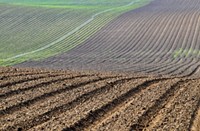Advertisement
Grab your lab coat. Let's get started
Welcome!
Welcome!
Create an account below to get 6 C&EN articles per month, receive newsletters and more - all free.
It seems this is your first time logging in online. Please enter the following information to continue.
As an ACS member you automatically get access to this site. All we need is few more details to create your reading experience.
Not you? Sign in with a different account.
Not you? Sign in with a different account.
ERROR 1
ERROR 1
ERROR 2
ERROR 2
ERROR 2
ERROR 2
ERROR 2
Password and Confirm password must match.
If you have an ACS member number, please enter it here so we can link this account to your membership. (optional)
ERROR 2
ACS values your privacy. By submitting your information, you are gaining access to C&EN and subscribing to our weekly newsletter. We use the information you provide to make your reading experience better, and we will never sell your data to third party members.
Environment
Acid Rain Levels May Control Lakes’ Dissolved Organic Matter
Lake Chemistry: Study links decreasing rain acidity to increasing levels of dissolved organic matter in lakes
by Mark Schrope
February 28, 2012

For decades, the concentration of dissolved organic matter, which is critical to aquatic ecosystem’s good health, has been rising in U.S. and European lakes. The trend has perplexed environmental scientists. Now a new study of lakes in the northeastern U.S. suggests that a welcome decrease in acid rain has driven this rise in dissolved organic matter (Environ. Sci. Technol., DOI: 10.1021/es204321x).
In recent years, the idea that acid rain levels help control those of dissolved organic matter (DOM) has gained traction because organic matter dissolves more easily as rainwater’s acidity decreases. But researchers have found other confounding correlations with DOM levels. For example, rising carbon dioxide can lead to additional plant growth; the extra plant matter in turn could break down to produce DOM that enters lakes (Environ. Sci. Pollut. Res., DOI: 10.1007/s11356-009-0176-7).
“There are just so many factors involved it’s been difficult to isolate the driver,” says Mike SanClements, an ecosystem ecologist at the University of Colorado, Boulder, and co-leader of the new study.
SanClements, Gretchen Oelsner of the Environmental Protection Agency, and their colleagues realized that historical water samples collected by the EPA might offer some answers. They wanted to compare the relative abundances of two types of DOM over time: terrestrial organic matter, which comes from land plants and soils, and lake organic matter, which comes from aquatic microbes and algae. If changes in rain acidity caused the increase in overall DOM levels, then the researchers expected to find a shift toward the terrestrial type because rainwater would carry more land-based organic matter into lakes.
To test the hypothesis, the team used fluorescence spectroscopy to analyze water samples from nine Maine lakes dating from 1993 to 2009. Since each DOM type has unique fluorescence signals, the researchers could determine the types’ relative abundance. They found that as total organic matter levels increased over time, the terrestrial signal grew stronger, supporting the idea that less acid rain led to more DOM.





Join the conversation
Contact the reporter
Submit a Letter to the Editor for publication
Engage with us on Twitter